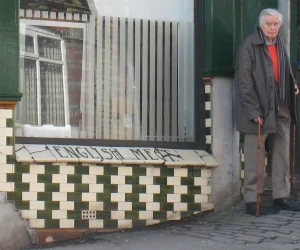How Many Circles Do You See? The Answer Might Surprise You
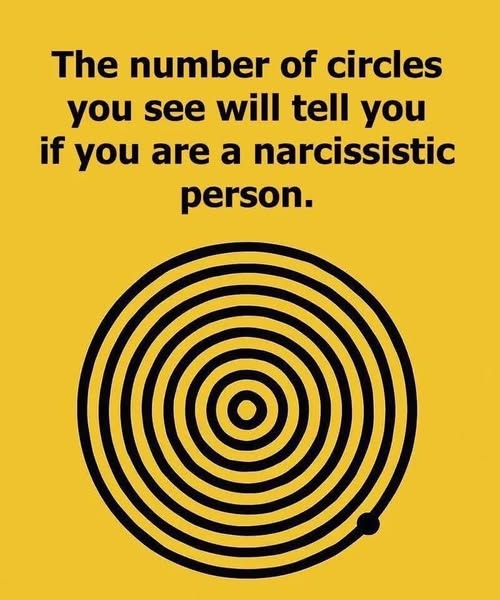
In the fascinating world of visual personality tests, nothing is ever as simple as it first appears. Each image hides a secret, waiting to be uncovered — and this one has taken social media by storm. At first glance, the picture looks like a hypnotic spiral designed to pull you in.
But if you look more closely, you’ll notice it’s made up of perfectly drawn concentric circles — and here’s where the challenge begins.The question is simple: How many circles can you see? It may sound like nothing more than a fun game, but many believe the answer reveals something much deeper.
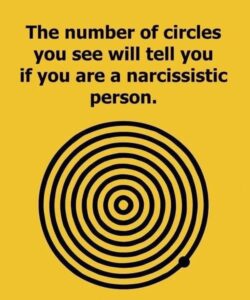
According to the viral post that started the craze, the number of circles you notice could hint at certain personality traits — even whether you lean toward narcissism. The theory behind it is fascinating. Some people spot only a few circles, while others can clearly distinguish many more.
This difference isn’t just about eyesight — it’s said to reflect how attentive you are to detail, how your mind processes patterns, and how you perceive the world around you. So take a moment. Study the image. Count carefully. Because the number you land on may reveal more about you than you ever expected.
We all love an illusion. They are fun, intriguing and can mess with our head.
There are many kinds of optical illusions, and science cannot always explain the reasons they play tricks on human perception. What we see in our minds is the result of our brains receiving information from our eyes and filling in the gaps. And they don’t always get it right.
We have gathered together some of our favourite visual tricks to give your brain a quick workout.
The checker shadow illusion

Square A and square B in the illustration above are the same colour. It seems impossible but it is true. To prove this, we can demonstrate with a modified image:

No, we can’t get our heads around it either! This is an example of a contrast illusion, which causes two areas of identical colour to appear differently depending on the context.
In the case of the checker shadow illusion, the shadow cast by the green shape seems to darken a brighter region. This amazing illusion was created by the vision scientist Edward Howard Adelson in 1995 and was designed to show how well our visual system can break down image information.
Therefore, this illusion isn’t a fault but a demonstration of the strength of our sight.
Café wall illusion
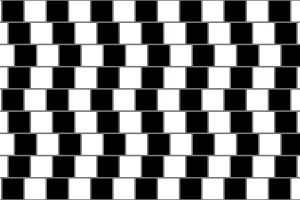
The café wall illusion is a geometrical-optical illusion where straight dividing lines between staggered dark and light blocks appear to be curved.
The theory is that our brains determine a white area to be larger than a black area, when it is actually the same size (known as the irradiation illusion). This can be proved by swapping black and white colours for any other colours with lower contrast.
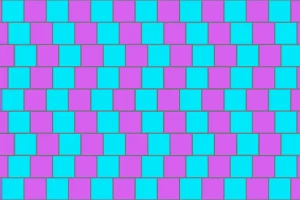
This illusion has many names but was termed the ‘café wall illusion’ by scientist Richard Gregory, who worked near a café (located in Bristol, UK), which was decorated with such a design on its frontage.
